Music from the Peoples of the Soviet Union
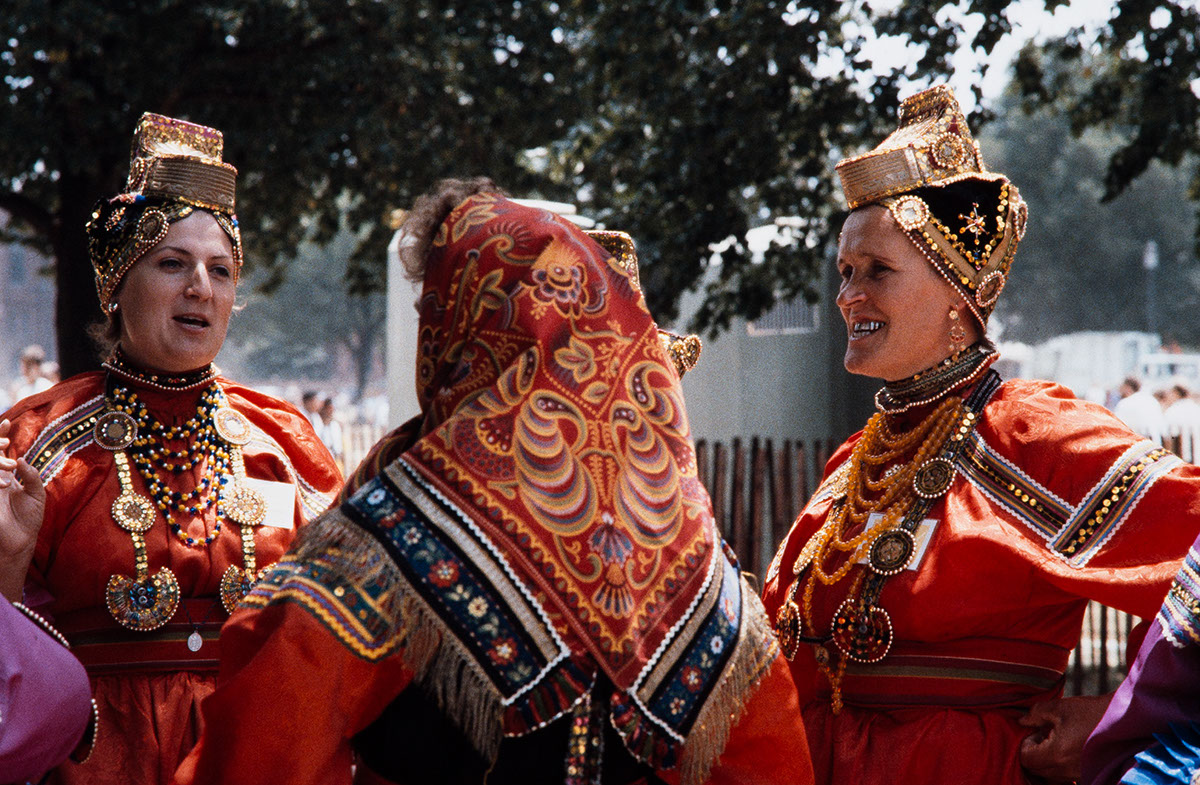
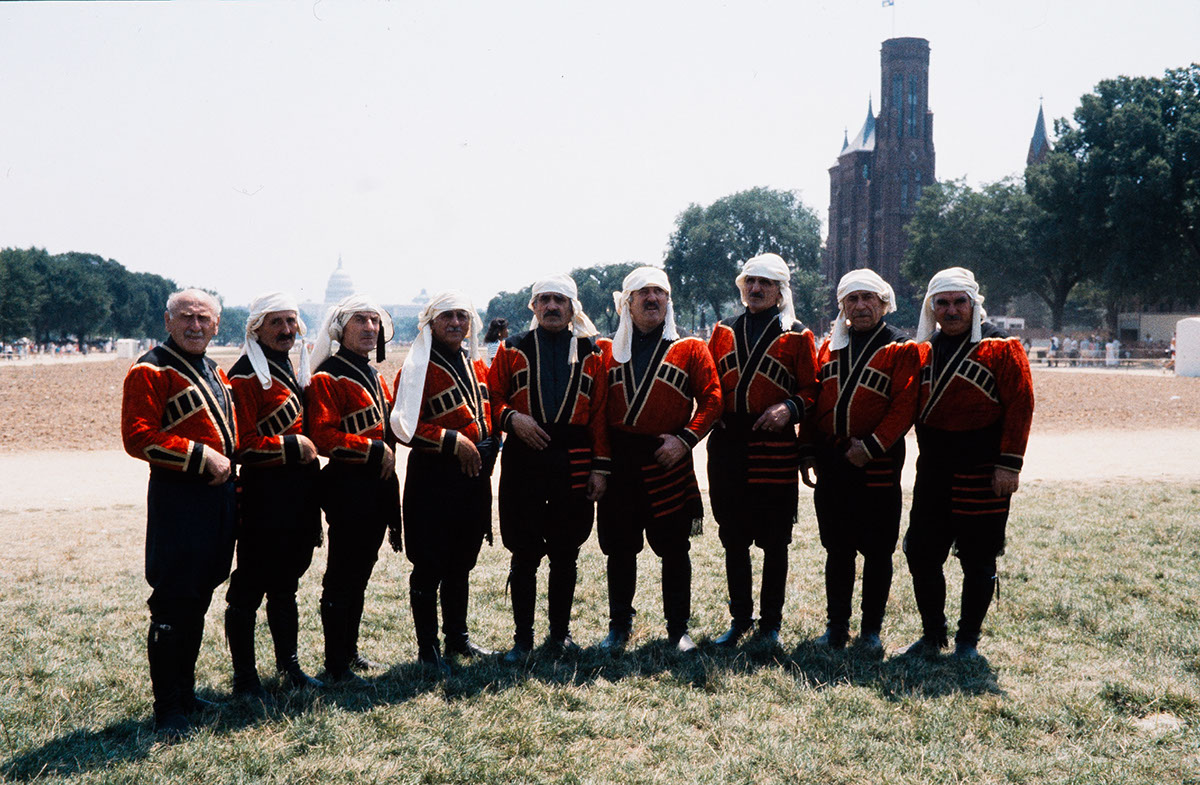

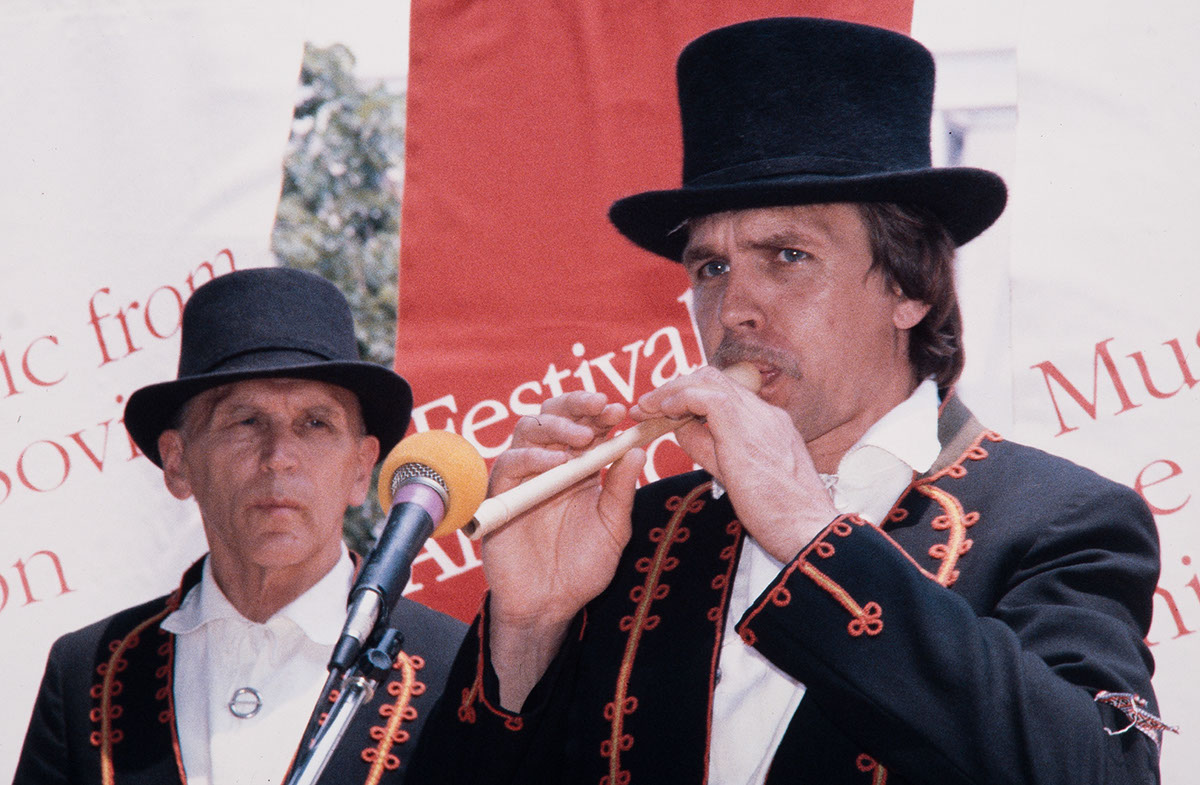
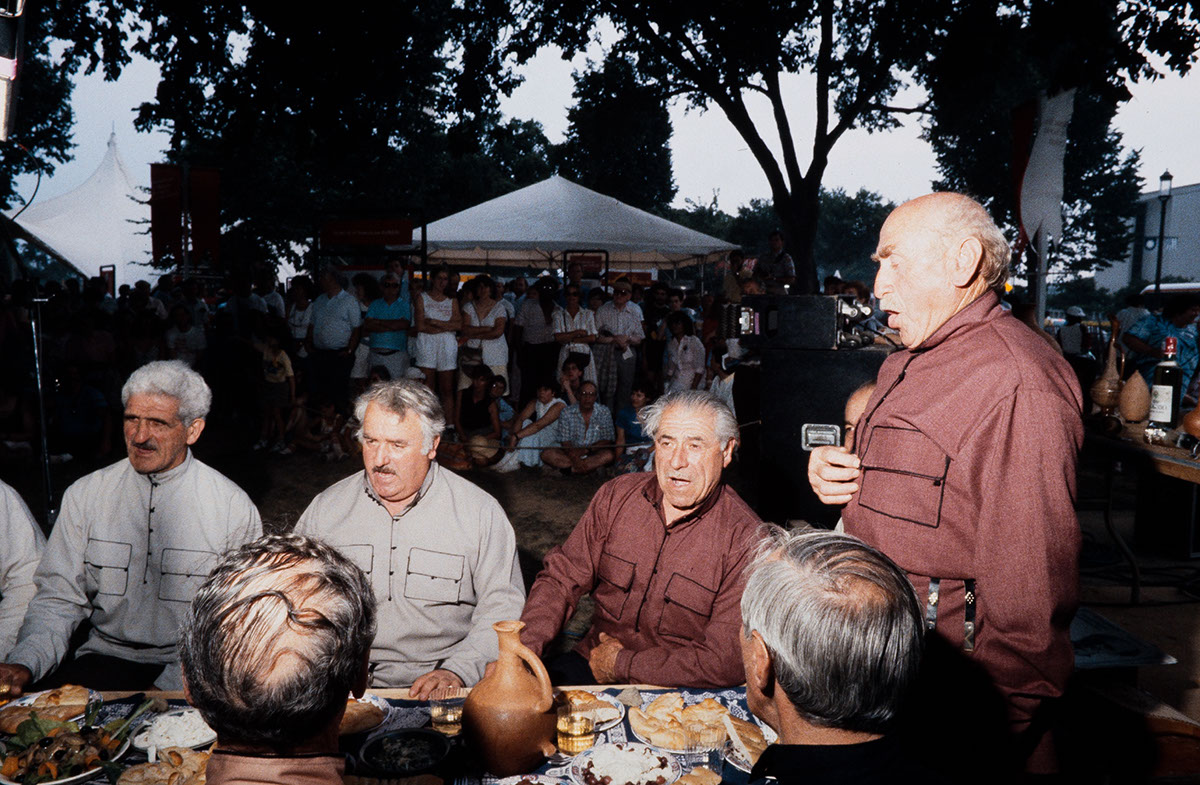
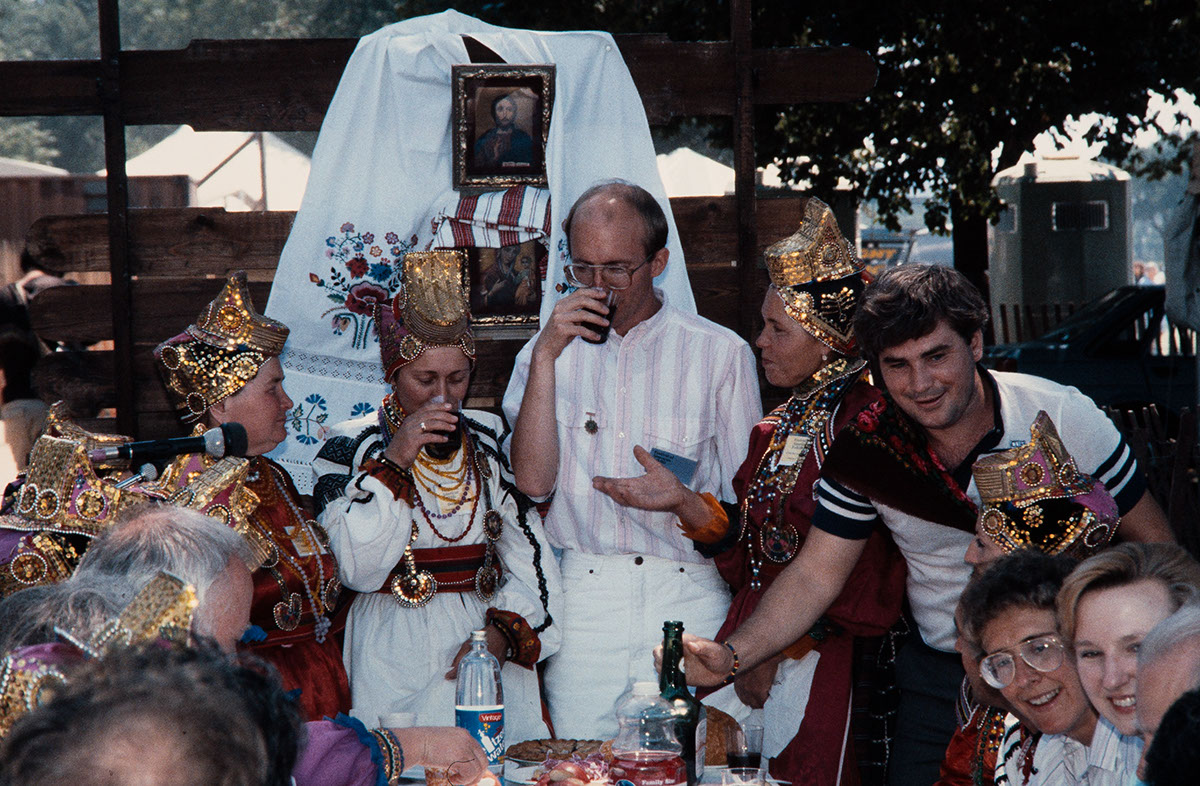
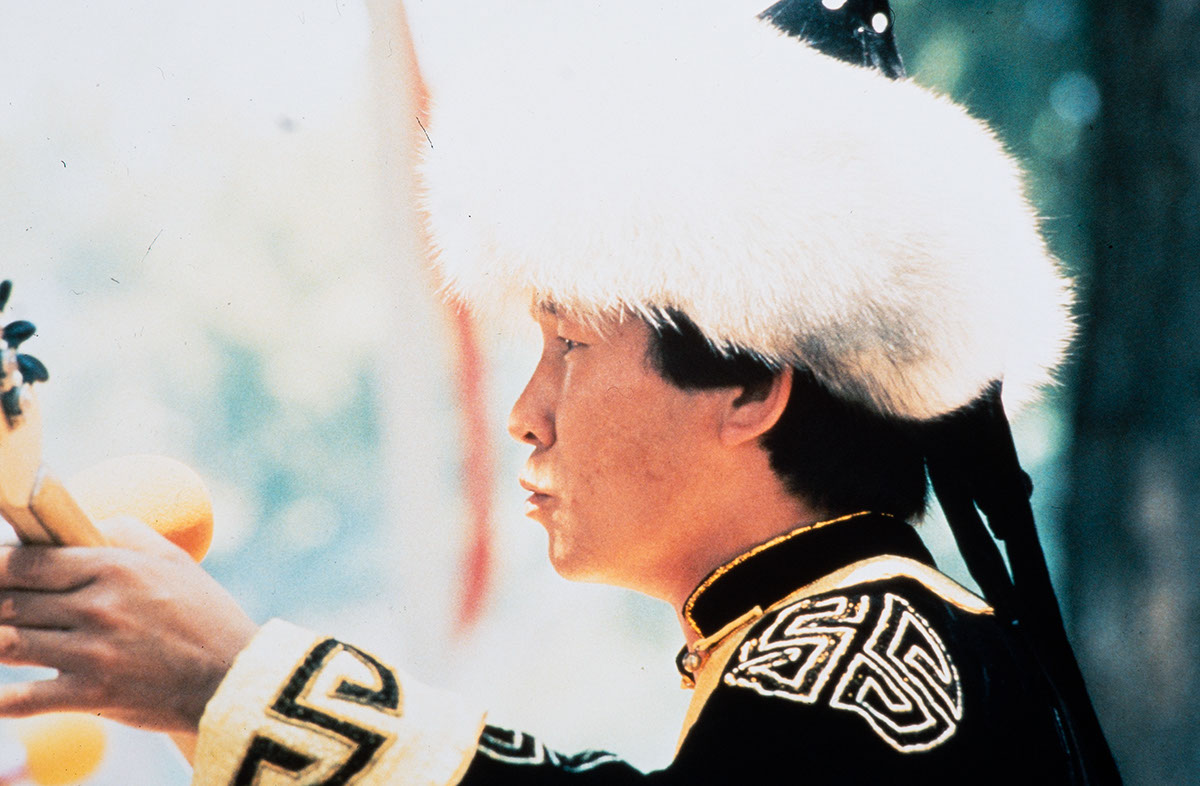
The 1988 Festival program, Musics of the Soviet Union, represented glasnost and perestroika in the cultural arena and started a lively discussion with Soviet scholars and officials over the relationship between grassroots people's culture and the State. The Soviet Ministry of Culture typically supported local, regional, and national folkloric ensembles. Based on historical research, the folklore that was publicly presented was largely theatrical - staged, choreographed entertainment. The Festival sought instead to represent ethnic, linguistic, and religious traditions that later defined the lines of post-Soviet republics. Performers ranged from practiced urban amateurs to an ensemble of peasant women from Podseredne. Visitors to the Festival heard Azerbaijani, Uzbek, Ukrainian, Georgian, and other musics from nine Soviet Republics, conveying the message of an incredibly culturally diverse nation.
Research in Russia and Ukraine grew from the Festival, as did five Smithsonian Folkways Recordings and another program in 1995 on Russian-American connections. Performers on the Festival Music Stage at the 1988 Festival later went to perform in the Soviet Union.
Margarita Mazo was Curator of the program, and Stuart Detmer was Program Coordinator.
Music from the Peoples of the Soviet Union was made possible with cooperation from the Ministry of Culture of the Soviet Union.

